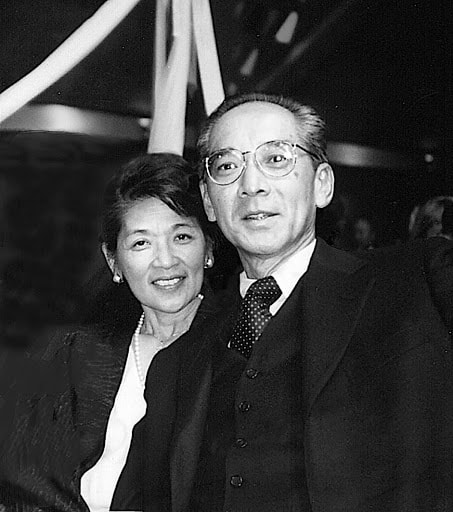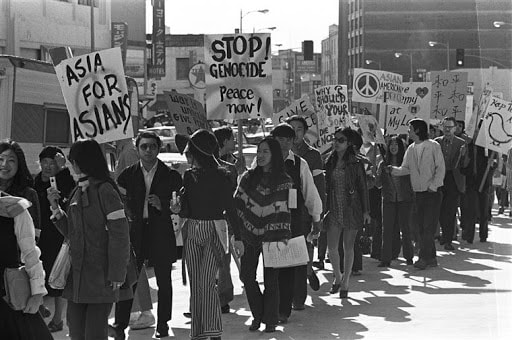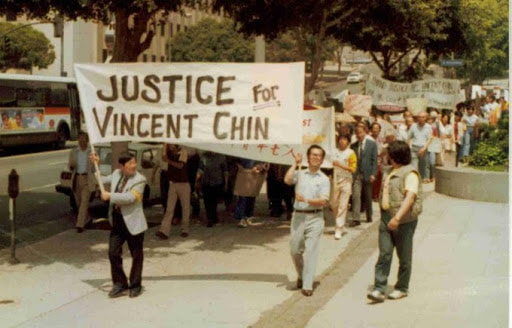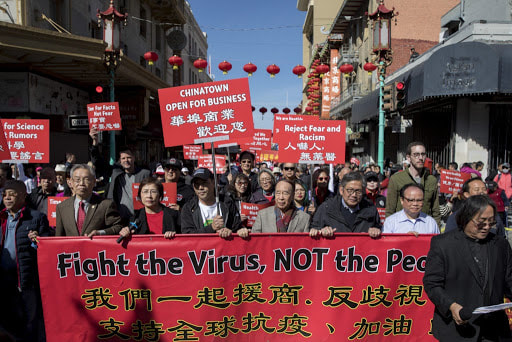|
Written by Darren Bansil Asian Americans constantly face and deal with racial misconceptions in America due to the
stereotypes made against them. Although these stereotypes can seem flattering, they tend to do more damage than good in most cases. But that’s a topic for another day. Stereotypes regarding Asians in America are shown to hold back Asian Americans in the workplace. Discriminations made against Asians cause them to feel separate, disconnected from the rest of their peers and coworkers. A survey of 350 Asian Americans conducted by Jason Shen, reports that a third stated feeling that “they are treated worse than white people” and eighty-eight percent reported facing a racial stereotype. Due to the model minority myth in America, many Americans simply don’t see Asians as a struggling race in America. Most of the time, white peers assume that Asians are less dominant, leading to bullying or discrimination in the workplace. This is combined with many negative stereotypes including making fun of Asians for having small penises. A study conducted by Jennifer Berdahl reports that East Asians who are dominant are racially harassed at work more than nondominant East Asians. So even if Asian Americans are dominant and fight back against these discriminatory behaviors, they face more severe harassment. Another study by Berdahl also reports that coworkers dislike a dominant Asian coworker compared to a nondominant Asian coworker and dominant or nondominant workers of any other race. This study lines up with the story of Stella who says that she gets treated courteously when she acts as the “deferential, quiet and nice Asian woman” but gets hostile reactions from speaking up, or strong disagreements and conflicting opinions. This is what is preventing Asians from obtaining higher, managerial positions in the workplace. According to the Pew Research Center, Asian Americans are the highest-income, best-educated racial group in the US; however, they sadly remain underrepresented in executive positions in companies. Sources: https://www.forbes.com/sites/liyanchen/2016/01/20/how-asian-americans-can-break-through- the-bamboo-ceiling/?sh=6422c0d21e43 https://www.forbes.com/sites/andiekramer/2020/01/22/why-asian-american-women-arent- advancing-into-senior-leadership-positions/?sh=4d60a8b973d2 https://psycnet.apa.org/record/2012-09819-004 https://www.fastcompany.com/40590269/asian-americans-on-being-likable-in-the-modern- workplace
0 Comments
Written by Jerry He Historically, Asian-Americans have been seen as apolitical, politically inactive. This partially derives from “model minority” stereotypes which paint the Asian-American community as passive, quiet and submissive. These notions, however, are increasingly being challenged in recent years. With the election of Kamala Harris, an Asian-American, to the office of Vice-President, as well as the rise of Asian-American activists in response to racial hate-crimes stemming from the coronavirus, Asian-American role in politics and government has taken the national spotlight. The term "Asian American" The term “Asian-American” used today can be dated back to 1968. It was created by activist and historian Yuji Ichioka to help unite various Asian ethnic groups to form a new united political and social block to advocate against common racial and social discrimination. Prior to this, various Asian groups in the USA were fractured politically and socially. These divided groups held significantly smaller social and political leverage and as a result, were easier to discriminate against. For example, during the Chinese Exclusion act, non-Chinese Asian groups did little to protest or object against the law. Furthermore, during World War II, when Japanese internment camps were created, Chinese and Korean Americans made an effort to distance themselves from the Japanese. It wasn’t until the Civil Rights Era of the 1960s, when the term “Asian-American” was coined, that these groups began to unite in a common effort to increase political participation and advocate against racial and social injustice/discrimination. Asian Americans calling for peace and an end to the Vietnam War in the streets of Los Angeles Little Tokyo, Jan 17, 1970 The Killing of Vincent Chin Another turning point in the political history of Asian-American was the killing of Vincent Chin. Vincent Chin, who was a Chinese American, was murdered after being mistaken for being Japanese, during a time where competition with Japanese manufacturers resulted in mass layoffs of auto workers in Detroit. The murder was largely seen as a hate crime and served as a rallying cry for Asian Americans of different backgrounds. Large groups of Asian-Americans organized and protested the killing, calling for justice. A group of Asian-Americans protest the killing of Vincent Chin Resurgence of the Asian-American movement The year 2020 brought a whole new set of issues for the Asian-American community. With the advent of the Coronavirus, Asian-Americans have been the victim of a dramatic increase in hate crimes and racism. The year 2020 alone has seen an almost 150% increase over previous years. This has spurred large groups of Asian-Americans to organize against these hate crimes. Coalitions of social justice groups like Stop AAPI Hate have formed in order to address these issues. Large scale social media efforts have also sought to inform and advocate against these hate crimes. Asian-Americans protest racism and discrimination in San Francisco, 2020 In addition to this, recent years have seen an increasing amount of Asian Americans participating in politics and government. Currently at the national level, there are 16 Asian Americans representing constituents in the House, and 2 in the Senate. Furthermore, being one the fastest growing ethnic groups in the USA, Asian-Americans represent an increasingly important electorate. Numerous groups such as APIA Vote, formed in 2007, have increased efforts in recent years to mobilize Asian-Americans in electoral and civic participation.
Written by Ibrahim Itani and Serina Kaochari Over the previous year, fueled by the ongoing pandemic-there has been a spark in the number of Asian American hate crimes. With a 150% increase in 2020, there have been a recorded over 2,800 incidents of violent acts committed against Asian Americans since the start of the pandemic. These incidents fuel a mass wave of anti-Asian hate, and create a sense of fear between many.
During late January, an 84-year-old Thai immigrant, named Vicha Ratanapakdee was a victim of the violent attacks against Asian Americans. He was on his usual morning walk, just after having said goodbye to his wife, he was violently slammed to the ground by a 19-year-old man. Ratanapakdee's family say the attack was more than an example of someone preying on the vulnerable and elderly. They called it a hate crime. This fatal attack caused a brain hemorrhage, leading to his death a mere two days later. Not only this incident, but many others have occurred and have been brought to light after the initial violent attack. Days later, a 91-year-old Asian man was violently shoved to the ground in Oakland's Chinatown. A month after, a 64-year-old woman was robbed outside a Vietnamese market in San Jose, California. And just recently, a 61-year-old Filipino man was slashed in the face on the New York City subway. Examining normalized Asian racism in American society is vital in truly understanding the Asian American experience and the reason why so many hate crimes have occurred lately. The model minority stereotype is the idea that all Asians are polite and educated which would mean Asian Americans are better off economically and socially. This dangerous and ignorant narrative is used to dismiss the problems Asian Americans face, while consequently setting unhealthy, high standards for Asian Americans to conform to. Though studies show that Asian Americans experience similar rates of depression and anxiety as other racial groups, they’re three times less likely to seek mental health services because of the pressure society puts on Asian Americans to always maintain a ‘perfect’ and ‘humble’ demeanor. Even so, a far more blatant and apparent form of normalized racism is that brought about by the societal glorification of Eurocentric beauty standards. More often than not Asian Americans are mocked and insulted for their skin tone or facial features, so much so that many people dismiss these hurtful comments as jokes. In a recent event a Sacramento teacher was caught on recording doing ‘slant eye’ in which she described her gestures as ways to identify Chinese, Japanese, and other Asian ethnicities. That video may seem shocking to people who aren’t familiar with the Asian American experience but to many Asian Americans across the country it’s an issue faced everyday. Asians have been the scapegoat for the COVID-19 pandemic and its consequences, this very villainization has highlighted the discrimination and racism Asian Americans have had to endure even prior to the pandemic. In many instances Asian culture and the Asian American experience isn’t taken seriously and the contributions Asian Americans make to society are taken for granted. To educate and to advocate is the greatest way to make a difference in the fight against anti-Asian rhetoric. Sharing the Asian American experience with others and outlining the hardships that go hidden in the lives of Asian Americans can make an impactful contribution in helping others realize the severity of this conflict. Change comes from the bottom up, and as more people continue to come together in the fight against racism real strides are being made for a better future. As this process goes on the rest of society must start by doing the obvious, acknowledging the rampant racism that goes on in the lives of Asian Americans. Sources: https://www.nydailynews.com/news/national/ny-sacramento-teacher-slit-eyes-anti-asian-racism-20210228-2ezilbnvhjdsdjeahcni336pom-story.html https://www.usatoday.com/story/news/2020/12/17/covid-19-era-shows-normalization-racism-against-asians/6515353002/ https://www.nytimes.com/2021/02/27/us/asian-american-hate-crimes.html https://www.voanews.com/usa/race-america/hate-crimes-targeting-asian-americans-spiked-150-major-us-cities Written by Hillary Quach Asian icons can be seen in movies, tv shows, and books. Yet, Wong Fu Productions showed a different pathway to fame through video making. The video sharing website known as YouTube, was the starting point for these boys.
Wong Fu Productions was founded by Wesley Chan, Ted Fu, and Philip Wang, where they initially used their own website to post videos, before transitioning to YouTube. They actually met at the University of California, San Diego with no plans of pursuing filmmaking. Short films are featured on their YouTube channel, with mostly Asian American casts. As seen in mainstream media, there is a lack of Asian representation, so Wong Fu decided to fill that gap. They do this with the purpose of demonstrating that people can relate to their content without being of Asian descent. Their Youtube channel also became a home for Asian American artists, like Far East Movement, which became the first Asian-American group to top the Billboard Hot 100 chart. In 2011, Wong Fu Productions reached 1 million subscribers and they currently have over 3 million subscribers on their YouTube channel. YouTube has become such a large platform and Wong Fu Productions is aware of this, “The culture has changed and we weren’t part of that, but I’m glad because we stayed focused to use it as a platform to tell our stories.” Wong Fu Productions is one of the most original icons in the filmmaking industry and continues to inspire others. They broke the standard for Asian representation in mainstream media, leading the way for many others to follow. |
Description
For the 2020-21 season, REACH will be releasing a new blog post written by our officers during the first and third Wednesdays of each month about different aspects of Asian culture, such as pop culture, conflicts faced, representation in media, history, celebration and holidays, and stereotypes. We hope you enjoy reading them! Archives
March 2021
Categories |






 RSS Feed
RSS Feed
